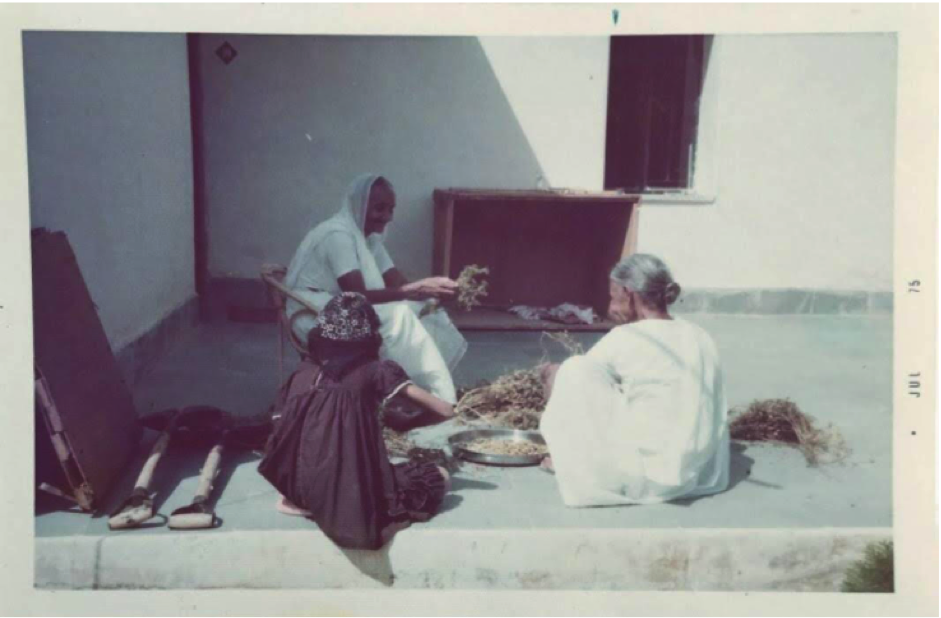by Prapti from Cumin Cook
This photo was taken in 1975 when I was only 15. The two women are my great aunts who we always called “Moti ben” (big sister) and “Nani ben” (little sister). They are both wearing white saris because they are widows. Both were married at a very young age and dressed in widow clothes, as tradition demanded in the early 1930s in India. The two sisters lived together for many years and once they had both become old came to live with us at our farm.

My two great aunts spent their days in helping my mother with household work. An important and critical part of this was making sure that the rice, wheat and legumes we usually stored for a year were kept pest free.
In this photo they are both picking off the leaves of dried Neem, which is an evergreen tree that grows prolifically in India. Neem leaves are bitter and a natural guard against weevils and other pests that are attracted to stored grains. Helping them is my sister who was 7 at the time. I took the photo!
The process of making Neem leaf preservative was time consuming. We first had to pick Neem branches at the right time, which is just before the Neem develops its berries. The only problem was that none of us was tall enough and so we had to rely on a farm worker to cut the branches down. This required a bit of coaxing as they had more important things to do!
Once the branches had been cut down, we spread them out on the patio for a few days to dry out. The hard work began after that as each dry leaf had to be painstakingly removed. Although this took a lot of time we didn’t care because both Moti ben and Nani ben had stories to tell us. And although we sat outside in the hot sun for a long time, the heat did not really bother us as we were enthralled with stories of their childhood.
I love this photo as it is the only one that I have of my two great aunts who taught me some of the preserving skills that I still use today.
METHOD FOR MAKING NEEM LEAF PRESERATIVE
Dry a few branches of Neem in the sun. After a few days pick off all the leaves. Place a layer of Neem leaves in the bottom of the container you will be storing your rice, wheat or legumes in. Pour a thick layer of rice, wheat or legumes over the Neem leaves. Put on another thin layer of Neem leaves and on top of that some more rice, wheat or legumes. Continue until your container is full. The topmost layer should be dried Neem leaves.
Make sure that you wash your rice, wheat or legumes really well before using.
